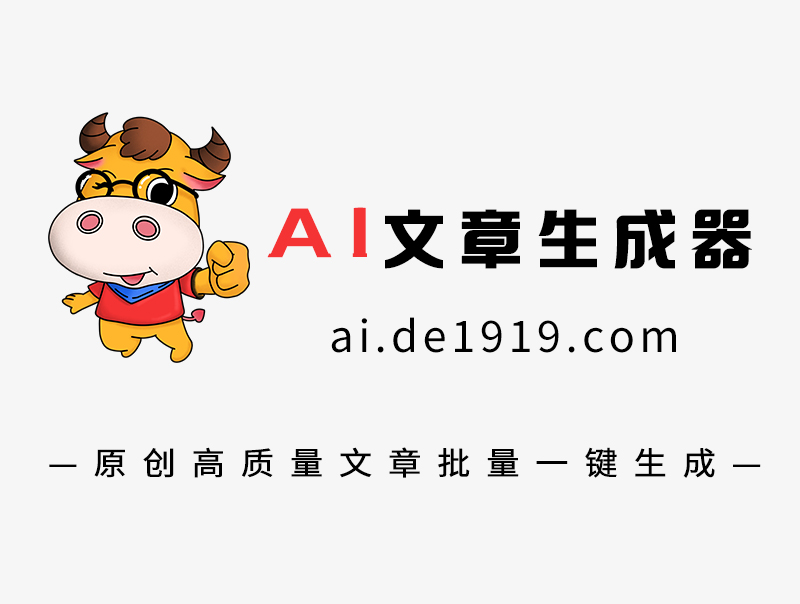本体是指什么(前庭和本体是指什么)
大家好!今天让创意岭的小编来大家介绍下关于本体是指什么的问题,以下是小编对此问题的归纳整理,让我们一起来看看吧。
开始之前先推荐一个非常厉害的Ai人工智能工具,一键生成原创文章、方案、文案、工作计划、工作报告、论文、代码、作文、做题和对话答疑等等
只需要输入关键词,就能返回你想要的内容,有小程序、在线网页版、PC客户端和批量生成器
本文目录:

本体是什么意思
意思:事物的原样或自身。
拼音:本体 [běn tǐ]。
引证:邹鲁 《中国同盟会》:“军事用票发行之后,流通世面,与实银同一使用。然其本体无真价,不过代表实银。”
释义:原来的体制、格局。主体。引申为根本的。
引证:李广田 《论怎样打开一条生路》:“这段话真是简单扼要,说出了今天的文学的本体问题。”
用法示例:
(1) 太虚无形,气之本体。其聚其散,变化之客形尔。
(2) 我曾经看到有人描写父爱“父爱如山”。以前的我根本体会不到父爱。其实父爱真是严肃的,他只是不会表达。他从来没有说过一句:“我爱你,宝贝。”类似肉麻的话。当我想要什么时,他都会努力的满足我。
近义词:
一、本质 [běn zhì]
释义:本身的形体;本来的形体。指本来的状貌。指人的本性;资质。本来的事实。
引证:刘知几 《史通·言语》:“夫本质如此,而推过史臣,犹鉴者见 嫫姆 多媸,而归罪于明镜也。”
二、实质 [shí zhì]
释义:本质;事物、论点或问题的实在内容。
引证:王西彦 《古屋》第五部二:“要紧的不是名词,而是实质。”
“本体”的定义是什么?
一、 本体的概念本体(Ontology )的概念最初起源于哲学领域,可以追溯到公元前古希腊哲学家亚里士多德(384-322 b.c.)。它在哲学中的定义为“对世界上客观存在物的系统地描述,即存在论”,是客观存在的一个系统的解释或说明,关心的是客观现实的抽象本质。
在人工智能界,最早给出Ontology定义的是Neches等人,他们将Ontology定义为“给出构成相关领域词汇的基本术语和关系,以及利用这些术语和关系构成的规定这些词汇外延的规则的定义”。Neches认为:“本体定义了组成主题领域的词汇表的基本术语及其关系,以及结合这些术语和关系来定义词汇表外延的规则。”(“An ontology defines the basic terms and relations comprising the vocabulary of a topic area, as well as the rules for combining terms and relations to define extensions to the vocabulary.”)。后来在信息系统、知识系统等领域,越来越多的人研究Ontology,并给出了许多不同的定义。其中最著名并被引用得最为广泛的定义是由Gruber提出的,“本体是概念化的明确的规范说明”,原文参见:
"An ontology is an explicit specification of a conceptualization. The term is borrowed from philosophy, where an Ontology is a systematic account of Existence. For AI systems, what "exists" is that which can be represented. When the knowledge of a domain is represented in a declarative formalism, the set of objects that can be represented is called the universe of discourse. This set of objects, and the describable relationships among them, are reflected in the representational vocabulary with which a knowledge-based program represents knowledge. Thus, in the context of AI, we can describe the ontology of a program by defining a set of representational terms. In such an ontology, definitions associate the names of entities in the universe of discourse (e.g., classes, relations, functions, or other objects) with human-readable text describing what the names mean, and formal axioms that constrain the interpretation and well-formed use of these terms. Formally, an ontology is the statement of a logical theory."。
和这个定义类似的有N. Guarino and P. Giaretta (1995)“本体是概念化的明确的部分的说明/一种逻辑语言的模型”(“an ontology is an explicit, partial account of a conceptualization/ the intended models of a logical language.”)。
W. N. Borst对该定义也进行了引申“本体是共享的概念模型的形式化的规范说明”(“An ontology is a formal specification of a shared conceptualization”)
Fensel对这个定义进行分析后认为Ontology的概念包括四个主要方面:
1. 概念化(conceptualization):客观世界的现象的抽象模型;
2. 明确(explicit):概念及它们之间联系都被精确定义;
3. 形式化(formal):精确的数学描述;
4. 共享(share):本体中反映的知识是其使用者共同认可的。
原文:“an abstract model of a phenomenon termed ‘conceptualization’,a precise mathematical description hints the word ‘formal’, the precision of concepts and their relationships clearly defined are expressed by the term ’explicit’ and the existence of an agreement between ontology users is hinted by the term ‘shared’.”
Swartout将本体定义为:“本体是一个为描述某个领域而按继承关系组织起来作为一个知识库的骨架的一系列术语”。(“An ontology is a hierarchically structured set of terms for describing a domain that can be used as a skeletal foundation for a knowledge base.”)。他的定义强调了本体中术语(terms)的重要性。
Fensel定义“本体是对一个特定领域中重要概念的共享的形式化的描述”。(“An ontology is a common, shared and formal description of important concepts in an specific domain.”)。
Noy F.N. 认为“本体是对某个领域中的概念的形式化的明确的表示,每个概念的特性描述了概念的各个方面及其约束的特征和属性。”(“An ontology is a formal explicit representation of concepts in a domain, properties of each concept describes characteristics and attributes of the concept known as slots and constrains on these slots.”)。
Fonseca定义“本体是以某一观点用详细明确的词汇表描述实体、概念、特性和相关功能的理论”。(“An ontology is a theory which uses a specific vocabulary to describe entities, classes, properties and related function with certain point of view.”)。
Starla认为“本体必需包括所使用术语的规范说明、决定这些术语含义的协议、以及术语之间的联系,来表达概念”。(“An ontology necessarily includes a specification of the terms used (terminology) and agreements that allow to determine their meaning, along with the possible inter-relationships between these terms, standing for "concepts".”)。
M. Uschold and M. Gruninger认为“”(“Ontology is an explicit account or representation of (some part of) a conceptualisation.”)。他还推荐了一个来自SRKB(Shared Re-usable Knowledge Bases)电子邮件列表的定义“本体是关于共享的概念模型的协议。共享的概念模型包括进行领域知识建模的概念框架、互操作的agent之间进行交流的内容明确协议、以及表达特定领域理论的协定。在知识共享的上下文环境中,本体特指表达性词汇表的定义的形式。一个非常简单的例子就是分类的层次结构,指明了类和它们之间的包含关系。关系数据库模式的作用也和本体一样,它指定了某些共享数据库之间可以存在的关系以及必须保持的完整性约束”(“Ontologies are agreements about shared conceptualization. Shared conceptualizations include conceptual frameworks for modeling domain knowledge; content-specific protocols for communication among inter-operating agents; and agreements about the representation of particular domain theories. In the knowledge sharing context, ontologies are specified in the form of definitions of representational vocabulary. A very simple case would be a type hierarchy, specifying classes and their subsumption relationships. Relational database shemata also serve as ontologies by specifying the relations that can exist in some shared database and the integrity constraints that must hold for them.”)。
参考资料:http://baike.baidu.com/view/29987.htm
什么是本体什么
“本体”是‘本’和‘体’两个独立的汉字组成的汉语复合词。‘本’字的基本含义是植物的根,‘本’字的引申义是事物的本源或来源。‘体’字的基本含义是人的身体,‘体’字的引申义是事物的身体或形体。“本体”这个汉语复合词在中国文化中的基本含义是事物的主体或自身,事物的来源或根源。二十世纪初,有学者用“本体”这个汉语词翻译西方哲学所追求的“超越一切存在者或现象、具有创造各种事物或现象能力”的根本实体。从此,“本体”一词成为了一个哲学名词。随着计算机科学的发展,计算机科学界用“本体”这个词表述和界定由Gruber提出的“本体是概念化的明确的规范说明”这个事物,于是,“本体”一词又成为了一个计算机科学的名词。
本体(Ontology)是一个概念框架,给出一套词汇标识一套概念,这些词汇就是术语。本体本身也需要标识,比如我们说”物理学“,物理学这三个字就标识了本体。对于本体这个形而上学的东西读者没必要纠结,只需知道在数据交换平台中计算机是使用编码来标识本体的就可以了。如”JS(教师)”标识一个本体,“XS(学生)”标识一个本体,在教师本体概念框架下“性别”指的是教师的性别,而在学生本体概念框架下“性别”指的是学生的性别,再比如:在教师本体框架下有“所教学科”这样的概念但在学生本体下没有,而在学生本体下会有“家长联系电话”这样的概念但在教师本体下没有。

本体是什么意思?
本体,指事物的本身;引申为根本的;哲学名词。语出《北史·魏彭城王勰传》:“帝曰:‘虽琱琢一字,犹是玉之本体。本体是什么意思?
本体 [ běn tǐ ] :德国哲学家康德唯心主义哲学中的重要概念,指与现象对立的不可认识的“自在之物”。辩证唯物主义否认现象和本体之间有不可逾越的界限,认为只有尚未认识的东西,没有不可认识的东西;机器、工程等的主要部分。
详细释义
1、事物的原样或自身。
《后汉书·应劭传》:“又集驳议三十篇,以类相从,凡八十二事。其见《汉书》二十五,《汉记》四,皆删叙润色,以全本体。”《北史·魏彭城王勰传》:“帝曰:‘虽琱琢一字,犹是玉之本体。’” 邹鲁 《中国同盟会》:“军事用票发行之后,流通世面,与实银同一使用。然其本体无真价,不过代表实银。”
2、原来的体制、格局。
北魏 郦道元 《水经注·河水四》:“余按 周处 此志……更为失志记之本体,差实録之常经矣。”
3、主体。
南朝 梁 刘勰 《文心雕龙·诸子》:“然繁辞虽积,而本体易总,述道言治,枝条《五经》。”
4、引申为根本的。
李广田 《论怎样打开一条生路》:“这段话真是简单扼要,说出了今天的文学的本体问题。”
5、佛教称诸法的根本自体或与应身相对的法身。
《大日经》卷七:“一身与二身,乃至无量身,同入本体。” 清 纪昀 《阅微草堂笔记·滦阳消夏录四》:“惟二公暂入轮回,旋归本体,无故现此泡影,则不可以理推。”
扩展资料
造句:
(1) 太虚无形,气之本体。其聚其散,变化之客形尔。
(2) 我曾经看到有人描写父爱“父爱如山”。以前的我根本体会不到父爱。其实父爱真是严肃的,他只是不会表达。他从来没有说过一句:“我爱你,宝贝。”类似肉麻的话。当我想要什么时,他都会努力的满足我。
(3) 在人类生活中,时间刹那而过,它的本体是处于一个流动状态中,知觉是昏钝的,整个肉体的构成是易腐朽的,灵魂是一个疾转之物,运气是很难预料的,名望是缺乏见识的东西。
(4) 心是宇宙的本体,万物的主宰,安身立命的根据,衡量是非的标准。天地间诸事诸物,举凡纲常伦理,言行举止,成败荣辱,皆不出于我心。
(5) 但不是本体论存在的本质扩展。
以上就是关于本体是指什么相关问题的回答。希望能帮到你,如有更多相关问题,您也可以联系我们的客服进行咨询,客服也会为您讲解更多精彩的知识和内容。
推荐阅读:
拼多多商品被降权了怎么补救(拼多多商品被降权了怎么补救视频)


 赣公网安备 50019002502384号
赣公网安备 50019002502384号



